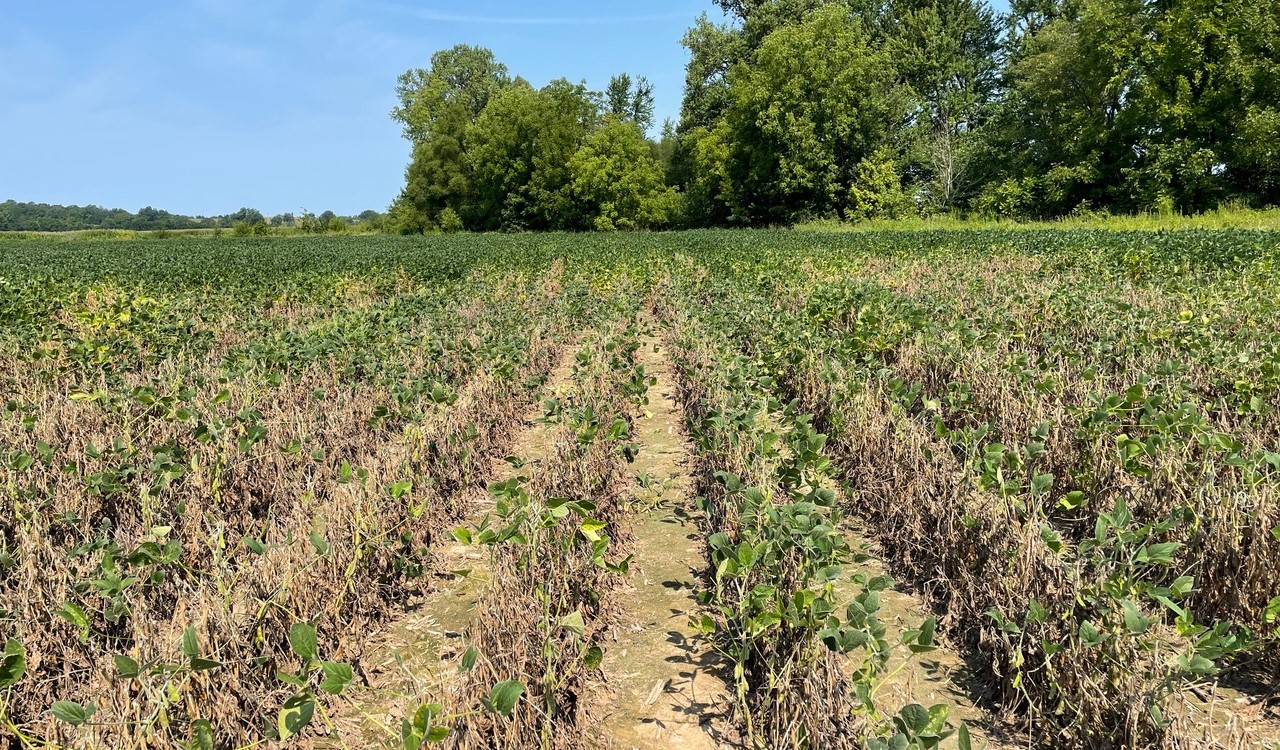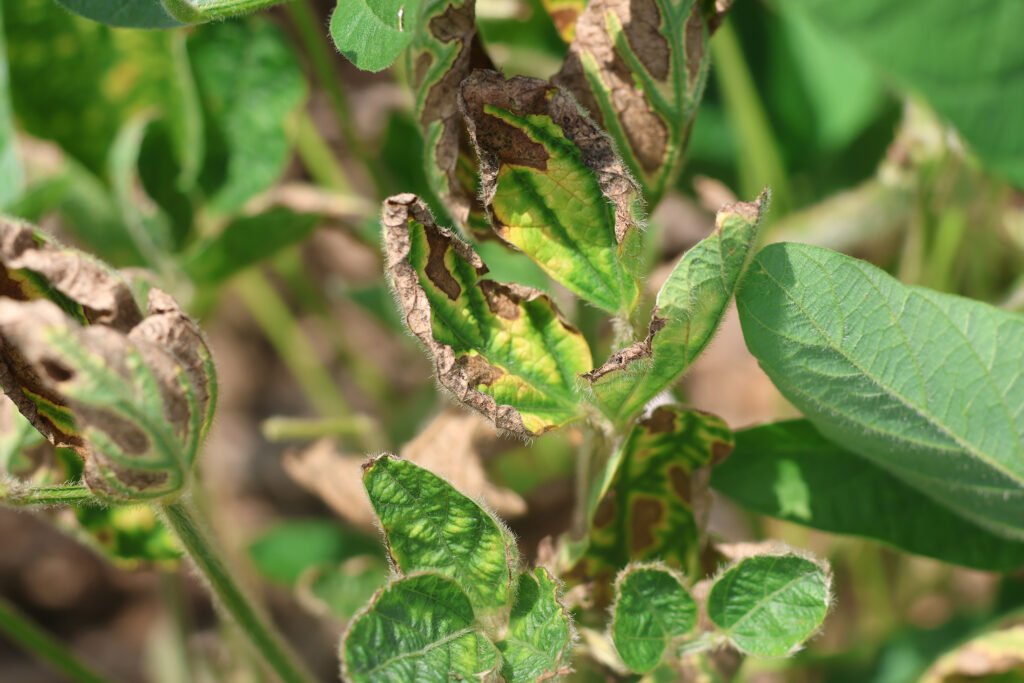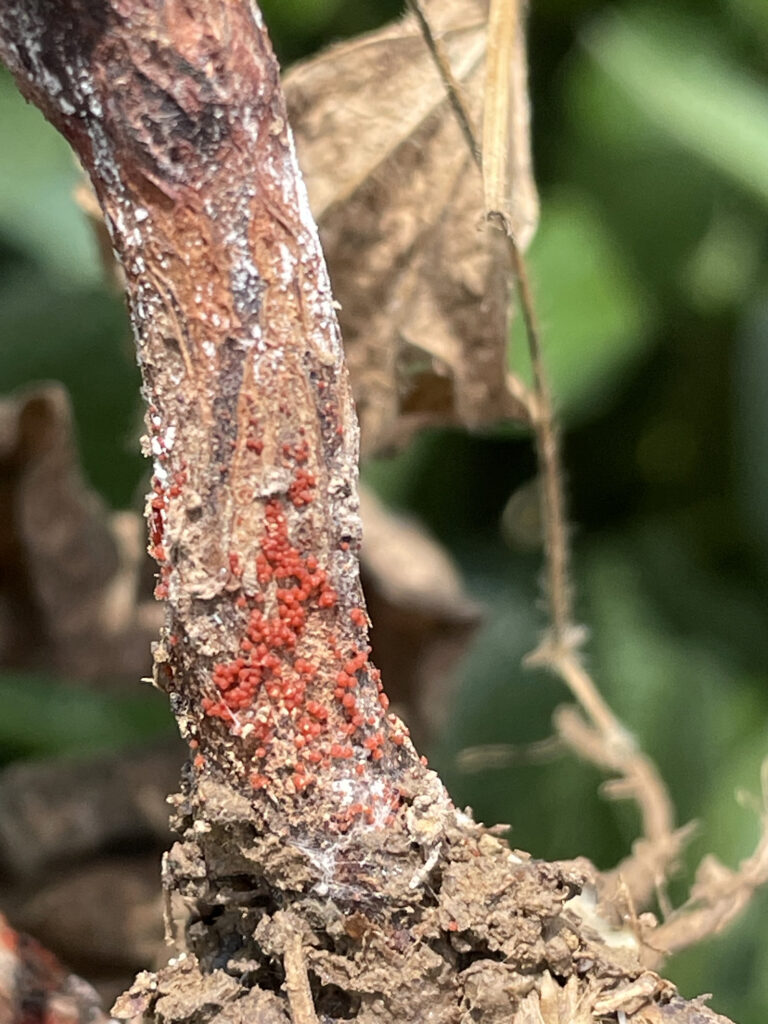Red crown rot: No cure for this soybean disease

COLUMBIA, Mo. — Once red crown rot spreads, you cannot unspread it, says University of Missouri Extension state plant pathologist Mandy Bish.
Currently, soybean and disease specialists know of no cure for red crown rot, which can reduce yields by an estimated 80% in severe cases. Seed treatments may reduce symptoms and infection, but these treatments cannot eliminate the fungus, which persists in the soil.
In the summer of 2024, MU Extension confirmed Missouri’s first cases of red crown rot: in Marion County in northeastern Missouri and Audrain County in central Missouri.
This disease was first identified in the southern U.S. in the 1960s and was confirmed in Illinois in 2018. Although it’s not fully known how red crown rot spread to the north-central U.S., there is speculation that exchange of used equipment has hastened the spread. Equipment used in fields with the pathogen could transport contaminated soil and spread the disease.
Red crown rot lookalikes
Red crown rot is often mistaken for sudden death syndrome (SDS), which causes similar symptoms in the leaves of infected plants. Yellow spots appear on upper canopy leaves and can progress into larger yellow and brown areas between leaf veins. In severe cases, wilting and death can follow. Distinguishing symptoms of red crown rot include reddish discoloration at the base of the stem and root near the soil line.
The fungus that causes red crown rot survives in plant residue over the winter and prefers wet conditions. It can infect seedlings, but symptoms often appear later in the season, usually when soybean plants enter the reproductive stage, says Bish. Cold winters may reduce fungi inoculum levels but won’t eliminate the pathogen entirely.
White fungal growth (mycelia) may be visible on the roots before red perithecia (round fruiting bodies) appear on the crown and root. Another fungus, Clonostachys, also confirmed in Missouri in 2024, can be mistaken for red crown rot. This fungus produces pink to orange perithecia that can resemble the red perithecia of red crown rot.
When scouting for red crown rot, dig up plants and inspect the crown and roots to distinguish it from SDS, says Bish. Split the stem open to help distinguish red crown rot from other lookalike diseases, including brown stem rot.
Fungicide seed treatments labeled for red crown rot may provide some protection against early-season infections. Soybean varieties may have different tolerances to the disease, but there are no commercial soybean varieties with resistance to red crown rot.
Good management is best option
The most effective way to manage the pathogen is to contain it, says Bish. However, this is difficult because it requires additional time and planning. Farmers should clean equipment thoroughly when moving from an infected field to an uninfected one, or work the infected area last to prevent further spread.
The red crown rot fungus thrives when soil temperatures are between 77 and 86 F, so the planting date and soil temperature may influence severity.
Rotating to a non-host crop like corn for two years is recommended. Additionally, improving field drainage can help manage the disease.
Red crown rot was first confirmed in peanut production in the U.S. in the 1960s and in soybean crops in the southern U.S. during the 1970s. The disease has now been confirmed in 11 soybean-producing states, including Missouri.
Contact the MU Plant Diagnostic Clinic at http://muext.us/PlantClinic to help with diagnosis of the disease. You can follow the spread of red crown rot and other plant diseases at the Crop Protection Network at https://CropProtectionNetwork.org.


Miss Clipping Out Stories to Save for Later?
Click the Purchase Story button below to order a print of this story. We will print it for you on matte photo paper to keep forever.

